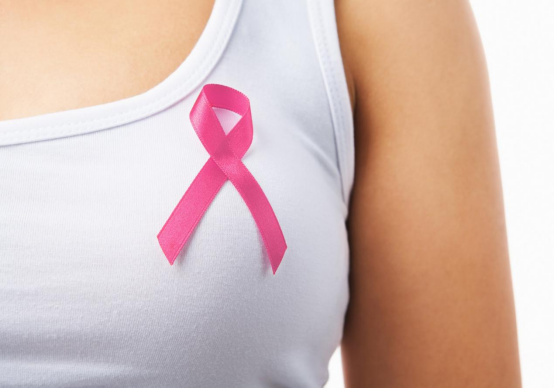Breast cancer is the most common type of cancer, surpassing colon cancer, ovarian cancer, pancreatic cancer and even lung cancer. For women over 50, the importance of early detection of breast cancer cannot be overstated. Mammograms are an important part of detection starting after age 40, but people should still be aware of key early signs. Get the facts.

According to documents from the CDC, professional medical providers can provide free mammograms. Women aged 40 to 49 should talk to their doctor about scheduling a free mammogram. Women over 50 should have a mammogram every 2 years. The CDC also has a National Breast and Cervical Cancer Early Detection Program, which provides free and low-cost screenings for women aged 40 to 64 if you are uninsured or your insurance does not cover screening exams.
The most common types of breast cancer are invasive ductal carcinoma and invasive lobular carcinoma. The former starts in the milk ducts and grows outside the ducts to other parts of the breast tissue. In the latter, the cancer starts in the lobules and spreads to nearby breast tissue. Lobules are glands that produce milk. Ducts are tubes that carry milk from the nipple.
TNBC is an aggressive subtype of breast cancer that grows faster and is harder to treat. TNBC often spreads to other parts of the body (metastasizes) before it is detected, and has a higher risk of coming back (recurring) after treatment. TNBC survival rates are generally lower than other types of breast cancer, especially when the cancer has metastasized. Symptoms of TNBC are similar to those of other types of breast cancer. These may include: a new lump or mass in the breast, changes in the shape, size, or appearance of the breast, changes in the skin of the breast, such as dimpling, wrinkling, redness, or peeling, nipple discharge, retraction, or pain, or swelling or pain in the armpit or collarbone area. Some women with TNBC may not have any symptoms at all, or their symptoms may be confused with other conditions, such as infections or cysts. That's why regular breast exams and mammograms are important to detect breast changes early.
Symptoms of breast cancer are different for different people; some people may not even have signs or symptoms of cancer at all. Warning signs include a new lump in the breast or underarm, thickening or swelling of the breast, inflammation of the skin on the breast, redness or flaking of the nipple area, nipple discharge (other than milk), or nipple pain. breast. The CDC notes that most breast lumps are not caused by cancer, so it's important to work with your doctor to get a diagnosis.
Breast cancer usually develops in women over age 50, but men and younger women can also get it. Many people have risk factors for breast cancer that they can't control. These can include early menstruation (before age 12), a family history of breast or ovarian cancer, dense breast tissue, and genetic mutations. However, there are many risk factors that can be influenced. These include not being physically inactive, not being overweight (especially after menopause), and having your first child before age 30 and breastfeeding (rather than having your first child after age 30 and not breastfeeding). Drinking alcohol is also a risk factor for breast cancer.
The CDC encourages women to breastfeed their children if possible. It also encourages women to limit the amount of alcohol they drink. Susan G. Komen also recommends eating fruits and vegetables to reduce risk. You should also talk to your doctor about possible risk factors associated with taking birth control pills. Screening is recommended because breast cancer is easier to treat when it is diagnosed early. In addition to MRIs (magnetic resonance imaging) and biopsies, doctors may perform mammograms and ultrasounds after screening to diagnose breast cancer. The American Cancer Society recommends that women start getting mammograms as early as age 40 if they wish; women 50 and older are recommended to have mammograms every one to two years.
There are a variety of treatments for breast cancer, depending on how advanced it is. Those affected can have surgery to remove cancerous tissue. You may need to receive chemotherapy to kill the cancer; these may be pills you take or medications injected into a vein.
Radiation uses high-energy rays to kill cancer cells. Hormonal and biological therapies try to stop or fight cancer cells in the body. Hormonal therapy helps reduce the risk of cancer coming back and helps shrink and control the cancer. Your doctor will be sure to discuss all of these options with you if you are diagnosed with breast cancer.





